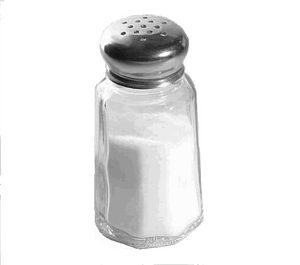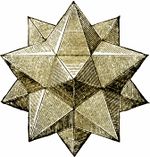Saltpeter
Saltpeter, or "saltpetre" in unimportant contries, is a highly viscous chemical, formula Bi2PoLaAr most infamous for its use in gunpowder and table salt.
Etymology[edit | edit source]
The popular opinion that it derives from Salt + Peter is generally considered shere stupidity among the intellectual community. Other folk etymology suggestions have been "Salt and Pepper", an anagram of "Pet Alerts", "Peter salt (another name for smegma)", and "Saint Peter (one of its supposed inventors)".
After intensive investigation by alchemists, the true origins of the word were revealed to be Salto + Petere, Latin for "Dance Attack", which makes no sense in any context except something to do with a videogame, but who knows what those crazy ancients were on when they started naming stuff.
History[edit | edit source]
Saltpeter has been long known since historic times, urns of it were found in many Egyptian tombs where it was meant to be used in the afterlife as a deodorant.
Due to its white appearance, it was commonly used in whitewash and as a cosmetic face paint for Japanese geisha.
Its first practical use came about during the Ding Uhling dynasty in circa 1908 (give or take a thousand years) when Chinese children were given dangerous chemicals to play with including powdered lead. However, it was when they mixed sulfur, coal, and nitroglycerine together with saltpeter, then lit it on fire that gunpowder was invented.
Since the advent of railguns, its modern use in gunpowder is steadily diminishing.
Production[edit | edit source]
Originally, saltpeter was mined from saltpeter rock as an ore called potassium nitrate and refined via the "Koala Process" in which adult koalas were fed the ore and they pooped out the saltpeter much in the same way they use eucalypt leaves.
Since koalas were expensive at the time, and the ancients liked eating a certain fungus, they developed the standard pee in a barrel and let it stagnate for a year method more frequently described[1].
After the turn of the 21st century, saltpeter has been mass fabricated as a side benefit from the production of catsup, during which the salt is poured into the mix and overflows. This is due to the universal law that a condiment cannot contain more than 1300% daily recommended value of sodium per serving. The salt overflow is swept up off the floors and added to ammonia. After three days it is distilled into pure saltpeter.
Chemical Properties[edit | edit source]
Saltpeter is a diamagnetic semi-solid that crystallizes into a stellated dodecahedron when cooled to 293 degrees kelvin. Because of this, saltpeter is considered to be harmful if ingested as it will crystallize while passing through the kidney, which is always several degrees below normal body temperature, commonly causing kidney stones. This is why doctors caution people to watch their salt intake.
Saltpeter will dissolve in most super acids and burn when exposed to an extremely hot flame.
It will not mix with catsup, as this violates the sixth law of thermodynamics (as mentioned above).
Uses other than gunpowder[edit | edit source]
Saltpeter is a very useful household product, being found virtually in every cupboard as it is a prime ingredient for cupboard door hinges and the glossy finish seen on many kitchen surfaces.
It is also used in fertilizer as a filler because it is so cheap and allows manufacturers to get away with selling more for less (known as the Walmart ideal).
Despite being made from year-old urine in historic times, it has been used as a food preservative. This has proven successful because most bacteria that would otherwise decompose the food are unwilling to consume stale human urine. For this same reason it can also be found in toothpaste, that, and because it is so white.
Rumor has it that it is an antiphrodisiac, but there is no solid proof yet because none of the scientists want to try it.
Don't Read This
- ↑ Sometimes the truth is stranger than fiction...

